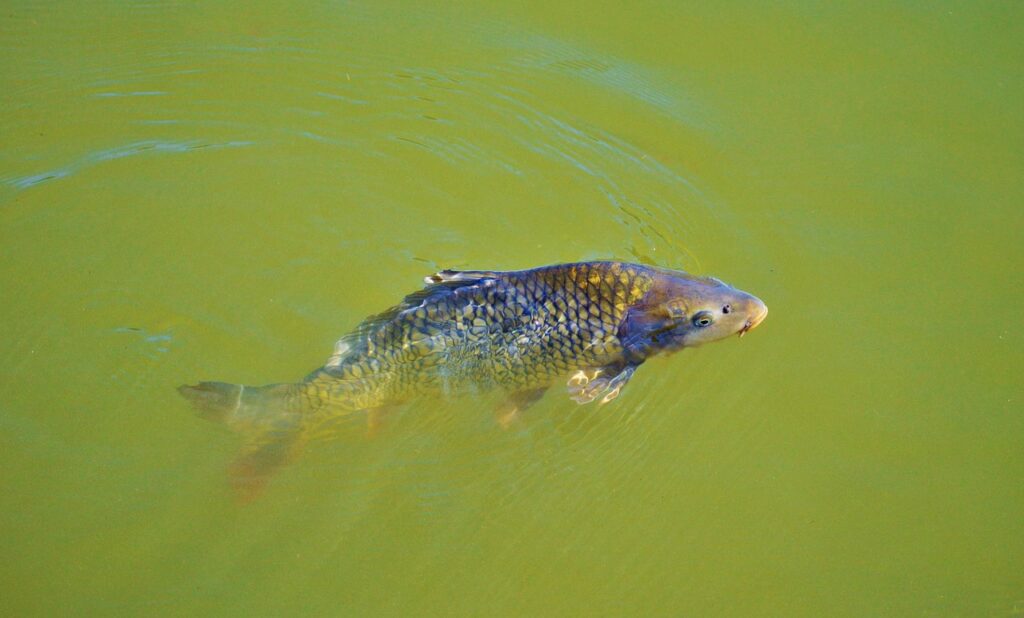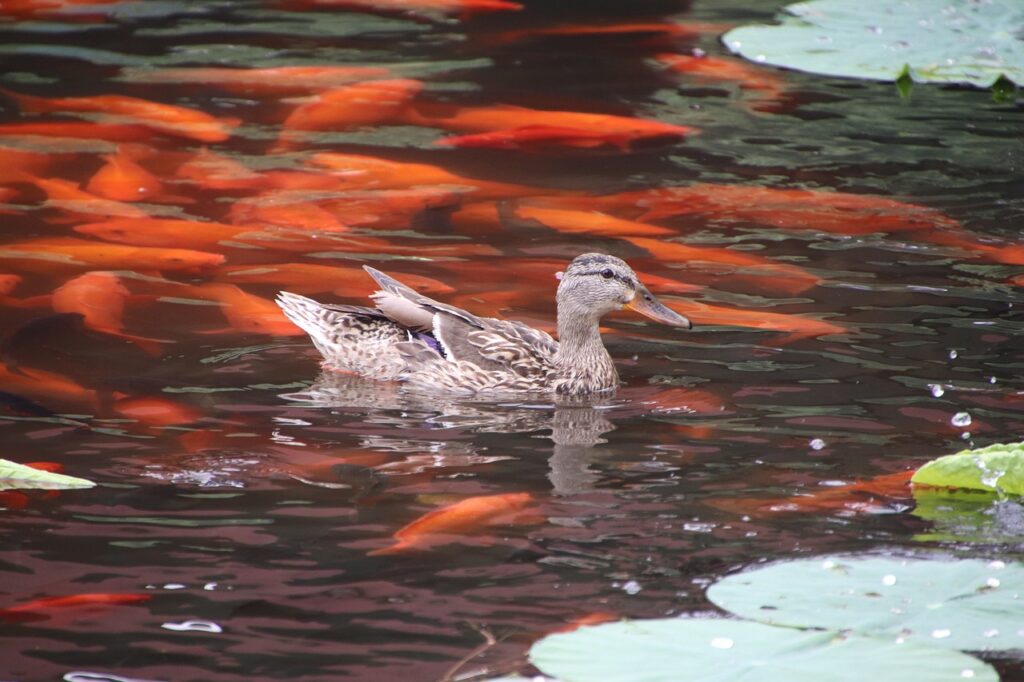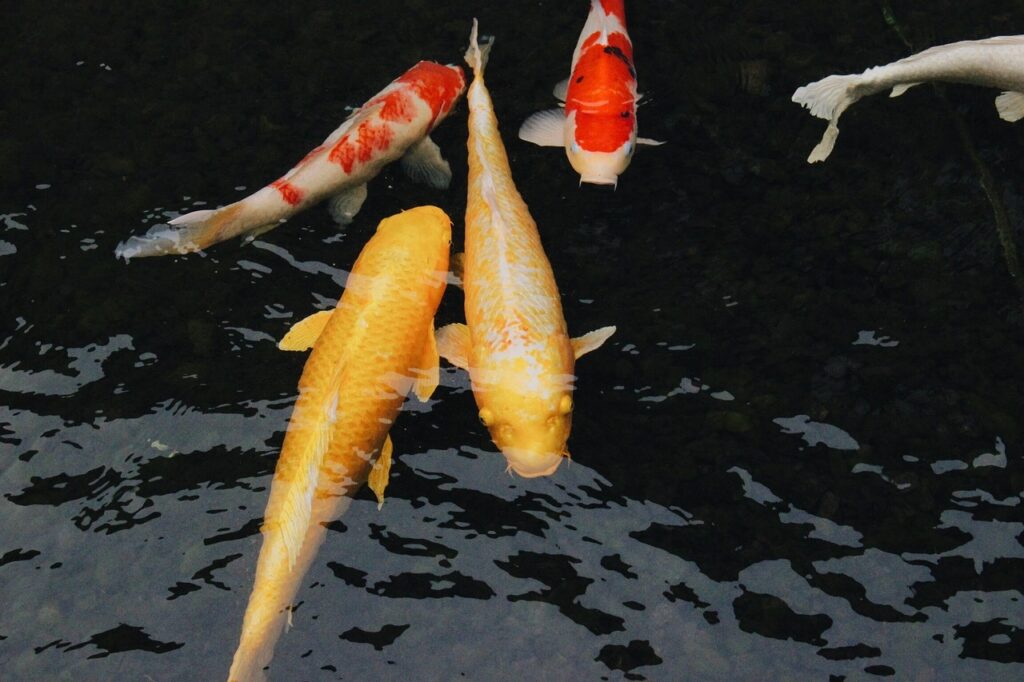In your fish pond, the overall health of your fish is paramount. Therefore, awareness and treating Gill Diseases are critical issues that offer you essential insights on how to spot early warning signs and take effective action.
Your fish’s gills are their lifeline, providing the oxygen they need to thrive, and understanding how to keep them healthy can make all the difference. This guide empowers you with knowledge about common gill illnesses, their causes, and practical treatment options, ensuring a vibrant and healthy aquatic environment.
If you have ever noticed your fish gasping at the surface of the water or seen them rubbing against objects in your pond, then these behaviors could indicate that your fish are facing respiratory challenges, possibly linked to gill diseases. Understanding the nature of these ailments and knowing how to treat them are crucial to ensuring the well-being of your aquatic friends.

Understanding Fish Gill Diseases
Gill diseases in fish encompass a range of conditions that impair the gills’ functionality, affecting your fish’s ability to breathe. Gill diseases can lead to severe health issues, including reduced oxygen intake and, in extreme cases, death. But don’t worry—with the right knowledge and timely intervention, you can manage and even prevent these conditions.
Those in the fish farming industry also have fish gill issues, such as Amoebic Gill Disease, and the quest to find a cure is being driven scientifically, as this is a huge threat to their livelihood.
What Are Gills and Their Function?
Gills are the respiratory organs in fish that extract oxygen from water and expel carbon dioxide. They consist of fine filaments and lamellae that increase surface area, ensuring efficient gas exchange. When these structures are compromised, your fish will struggle to breathe.
Common Symptoms of Gill Diseases
Certain behaviors and physical changes can signal that your fish are suffering from gill diseases. Look out for:
- Gasping at the water’s surface
- Rubbing against objects (flashing)
- Red or inflamed gills
- Increased mucus production
- Lethargy
- Loss of appetite
These symptoms can disrupt the balance of your aquarium’s ecosystem and indicate an urgent need for intervention.
Types of Gill Diseases
Gill diseases can stem from various causes, including infections, parasites, and environmental factors. Here’s a closer look at the most common types of gill diseases:
Infectious Gill Diseases
- Bacterial Gill Disease: Typically caused by Flavobacterium branchiophilum, this condition leads to inflamed and hemorrhaging gills.
- Parasitic Gill Disease: Often results from protozoan parasites like Ichthyophthirius multifiliis (Ich) or flukes belonging to the Dactylogyrus genus.
- Fungal Gill Disease: Occasionally, gills can be infected by fungal spores, resulting in a cotton-like appearance.
Non-Infectious Gill Diseases
- Gill Hyperplasia: This is an overgrowth of gill tissue caused by poor water quality and chemical irritants.
- Ammonia Poisoning: High levels of ammonia in the water can lead to gill burns and increased mucus production.

Diagnosing Gill Diseases
Accurate diagnosis is the cornerstone of effective treatment. Given the variety of gill diseases, it’s essential to pinpoint the root cause.
Physical Examination
Conduct a careful examination of your fish. Look at their gills under good lighting—are they red, inflamed, or producing excess mucus? Are there visible parasites or lesions?
Behavioral Observation
Keep an eye on your fish’s behavior. Are they gasping for air or rubbing against surfaces? Behavioral changes are usually the first signs that something is amiss.
Water Testing
Test your aquarium water for ammonia, nitrites, and pH levels. Poor water quality is a common culprit in gill distress, and maintaining optimal conditions can prevent many issues.
Microscope Analysis
For a more precise diagnosis, take gill swabs and examine them under a microscope. This can help identify parasites, bacteria, and fungal infections that are not visible to the naked eye.
Treating Gill Diseases
Once you’ve identified the problem, it’s time to step in with appropriate treatments. The method you choose will depend largely on the type of gill disease your fish are facing.
Treating Infectious Gill Diseases
- Bacterial Infections: Use broad-spectrum antibiotics such as tetracycline or erythromycin. Follow the dosage instructions carefully to avoid resistance.
- Parasitic Infestations: Treat with antiparasitic medications like formalin or copper-based treatments. Ensure you remove activated carbon from your filter before treatment, as it can absorb the medication.
- Fungal Infections: Use antifungal treatments such as malachite green or methylene blue. Maintain high water quality to prevent recurrence.
Treating Non-Infectious Gill Diseases
- Gill Hyperplasia: Improve water quality by performing regular water changes and using appropriate filters. Reduce chemical irritants and consider using water conditioners.
- Ammonia Poisoning: Conduct large water changes to dilute ammonia levels. Use water conditioners that neutralize ammonia, and ensure your aquarium cycling is properly established.
Preventing Gill Diseases
An ounce of prevention is worth a pound of cure. Implementing preventive measures can save you a lot of hassle down the line.
Maintain Optimal Water Quality
Regularly monitor and maintain water conditions. Here’s a quick guideline:
| Parameter | Optimal Range |
|---|---|
| pH | 6.5 – 8.0 |
| Ammonia | 0 ppm |
| Nitrites | 0 ppm |
| Nitrates | <20 ppm< />d> |
| Temperature | Appropriate for your fish species (usually 24-28°C or 75-82°F) |
Quarantine New Fish
Always quarantine new fish for at least two weeks before introducing them to your main tank. This helps prevent the spread of diseases.
Regular Health Checks
Perform regular health checks on your fish. Early detection of symptoms can make treatment more effective and less stressful for your fish.
Limit Stress
Stress can weaken a fish’s immune system, making them more susceptible to diseases. Avoid sudden changes in water parameters, overcrowding, and aggressive tank mates.

Advanced Treatments and Care
If the standard treatments are ineffective, you may need to resort to more advanced methods.
Salt Baths
In certain cases, salt baths can help detoxify the gills and provide relief. Prepare a separate container with dechlorinated water and dissolve aquarium salt at a concentration of 1-3 grams per liter. Place the affected fish in the solution for 5–10 minutes.
Hospital Tank Treatment
Isolate severely affected fish in a hospital tank. This will prevent the spread of disease and allow for more controlled treatment conditions. Ensure the hospital tank has optimal water conditions to aid in recovery.
Veterinary Intervention
For stubborn or severe cases, consulting an aquatic veterinarian can be beneficial. They can offer tailored treatment plans and might even suggest advanced treatments like injections or specialized medications.
Case Studies: Real-Life Scenarios
Sometimes, seeing how others have handled similar situations can offer valuable insights. Here are a couple of case studies:
Case Study 1: Bacterial Gill Disease
Scenario: Sarah noticed that her goldfish were developing red, inflamed gills and were becoming lethargic.
Diagnosis: After a thorough examination and a water test revealed high levels of ammonia, a bacterial gill infection was suspected.
Treatment: Sarah performed a 50% water change, added a broad-spectrum antibiotic, and improved filtration. Within a week, the goldfish showed significant improvement.
Case Study 2: Parasitic Gill Disease
Scenario: John’s guppies were scratching themselves against the tank decorations and gasping at the surface.
Diagnosis: Microscopic examination revealed the presence of gill flukes.
Treatment: John treated the tank with a copper-based antiparasitic medication and quarantined the affected fish. He also added a water conditioner to detoxify the water. The guppies were symptom-free in two weeks.
Myths and Misconceptions
When it comes to gill diseases, misinformation can be just as harmful as the diseases themselves. Let’s debunk some common myths:

Myth 1: Only Old Fish Get Gill Diseases
Fact: Gill diseases can affect fish of all ages. Young fish are particularly vulnerable due to their developing immune systems.
Myth 2: Salt Cures All Gill Diseases
Fact: While salt baths can be beneficial for some conditions, they are not a cure-all. Different diseases require specific treatments.
Myth 3: Gill Diseases Are Always Fatal
Fact: With timely and appropriate treatment, many gill diseases can be effectively managed or even cured.
Continuing Education and Resources
Keeping your fish healthy is an ongoing commitment. Here are some resources to help you stay informed:
Books
- “The Manual of Fish Health” by Dr. Chris Andrews, Adrian Exell, and Dr. Neville Carrington
- “Aquarium Care Handbook” by David Hernandez
Online Forums
- The Fish Health Forum: A community of experts and hobbyists sharing their knowledge
- AquaScaping World: Forums specifically focused on plant and fish care
Local Fish Stores and Clubs
Engaging with experienced aquarists in your community can provide practical advice and support.
Awareness And Treating Gill Diseases
Gill diseases are serious conditions that require your attention and care, and by understanding the underlying causes, recognizing symptoms early, and applying the right treatments, you can ensure a healthy environment for your fish.
Remember, prevention is always better than cure, so maintain optimal water conditions and monitor your fish regularly, and with a little diligence, you can keep your aquatic friends happy and thriving!
So, if you see your fish choking, now you know how to diagnose, treat, and prevent gill diseases, ensuring your fish can breathe easily.
